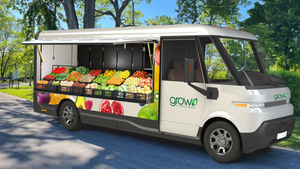COKE'S CROSS-MERCHANDISING KEEPING EYE ON CONSUMER
TAMPA, Fla. -- For a cross-merchandising promotion to be successful it must supply the consumer with a recognizable benefit, according to a marketing official with Coca-Cola Co."A brand marketer always has to make sure that the promotion is grounded in a benefit to the consumer, and the consumer has to receive a real benefit from the promotion," said John Byrne, retail marketing manager for Coca-Cola
March 4, 1996
RICHARD TURCSIK
TAMPA, Fla. -- For a cross-merchandising promotion to be successful it must supply the consumer with a recognizable benefit, according to a marketing official with Coca-Cola Co.
"A brand marketer always has to make sure that the promotion is grounded in a benefit to the consumer, and the consumer has to receive a real benefit from the promotion," said John Byrne, retail marketing manager for Coca-Cola USA, Atlanta.
As an example, Byrne cited a freestanding insert that had a 25-cent coupon off the purchase of diet Coke and another for the purchase of a box of Ritz Bitz crackers.
"This promotion had no real benefit to the consumer and as a result it had low redemption rates," Byrne said.
Byrne discussed the positive and negative aspects of cross-merchandising between brands in a presentation he gave at a cross-merchandising conference here that was sponsored by the Institute for International Research, New York.
"Cross-merchandising, brand marketing and cobranding give us great opportunities to grow our mutual businesses -- our brands -- as long as we effectively and efficiently provide true added value to the end user, our mutual consumer, and a true benefit to our retail customers," he said, adding that the best promotions are often the simplest.
"If there are too many obstacles and hoops to jump through for the promotion, then the consumer won't do it," he said.
Byrne said that brand marketers have to take care to design promotions that actually move products into the mouths of consumers.
"In our business, until you hear the Shhhh of a can or bottle of Coca-Cola being opened, we are just moving boxes around from point A to Point B and Point C. So until we move to consumption and truly activate brands, they never really provide a lot of value to the brand, or for that matter to the consumer as well," he said.
For a strong promotion, Byrne cited cases of Coke that were specially designed for Target discount department stores and that featured coupons for merchandise in various Target departments on the bottom. The coupons offered a real benefit to the shopper, increased sales of Coke in Target stores and helped to build traffic in Target's other departments.
"This program was hard for Coke to manage because we use bottlers all across the country, and we were cobranding simply to increase the movement through Target's warehouse, but we did sell a lot of soda," Byrne said.
About the Author
You May Also Like




